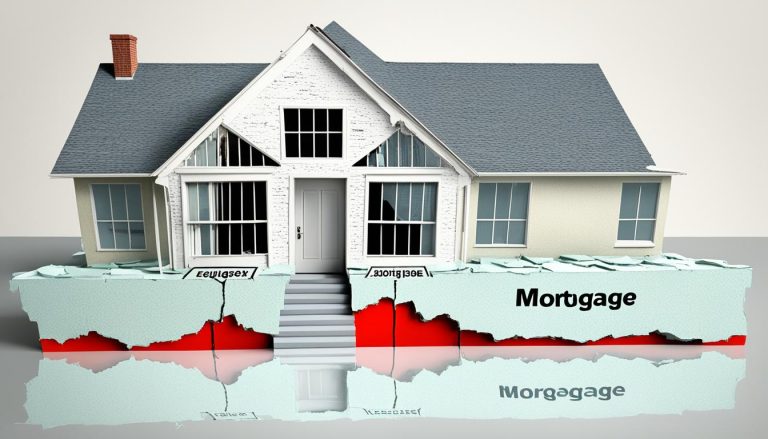The stamp duty landscape in England is set to shift dramatically from 1 April 2025, as the temporary relief measures introduced in 2022 will expire. These changes to Stamp Duty Land Tax (SDLT) thresholds and rates will impact a wide range of buyers, from first-time homeowners to seasoned property investors.
Understanding how the new stamp duty rates will affect purchase costs is essential for anyone planning to buy property in the UK. This article provides a full breakdown of the updated stamp duty thresholds and highlights the key changes homebuyers need to be aware of for 2025.
What Is Stamp Duty Land Tax And Who Needs To Pay It?

Stamp Duty Land Tax (SDLT) is a property tax levied by the UK government, payable by individuals or entities purchasing land or property in England and Northern Ireland. This tax must be settled within 14 days of the completion date of the transaction. The tax amount is determined based on the purchase price and relevant SDLT rates that apply at the time of purchase.
In England, SDLT is applicable whether a buyer is purchasing a freehold, leasehold, or property under a shared ownership scheme. It also applies when a property or land is transferred in exchange for payment. While the system is consistent across most of England, Wales uses a different scheme called the Land Transaction Tax (LTT), which features separate rates and thresholds.
Some transactions are exempt from SDLT, particularly those involving properties priced below certain thresholds. In September 2022, temporary SDLT relief was introduced, raising the zero-rate band and easing the burden on homebuyers.
This temporary measure was especially beneficial to first-time buyers and was intended to stimulate the housing market during economic uncertainty. However, these relief measures are scheduled to end by 31 March 2025, after which the updated stamp duty rules will come into effect.
When Do The New Stamp Duty Rates Come Into Effect In 2025?
The updated SDLT thresholds and rates will take effect from 1 April 2025. These changes follow the expiry of the temporary relief measures introduced in September 2022. Those measures were aimed at improving housing affordability by reducing the amount of SDLT owed, particularly benefiting first-time buyers and those purchasing lower-priced properties.
As the housing market begins to stabilise, the government is reinstating the previous thresholds and introducing adjustments to discourage speculative property purchases. With this rollback, more buyers will find themselves liable for SDLT. Property buyers and investors should factor this timeline into their purchasing decisions, especially if they are aiming to minimise their tax exposure by buying before the new rates are implemented.
How Are The New Stamp Duty Thresholds Changing From April 2025?
The new SDLT thresholds from April 2025 will result in increased liability for several categories of buyers, especially those purchasing properties valued between £125,001 and £250,000. Both main residence buyers and first-time buyers will be affected, with changes also applying to those buying second homes or rental investments.
Main Residence Stamp Duty Changes
| Property Price Range | SDLT Rate Until 31 March 2025 | SDLT Rate Starting 1 April 2025 |
| Up to £125,000 | 0% | 0% |
| £125,001 to £250,000 | 0% | 2% |
| £250,001 to £925,000 | 5% | 5% |
| £925,001 to £1.5 million | 10% | 10% |
| Above £1.5 million | 12% | 12% |
The key difference here is the restoration of the 2% SDLT band for homes priced between £125,001 and £250,000, which had been previously exempt under the temporary relief.
First-Time Buyer Stamp Duty Changes
| Property Price Range | SDLT Rate Until 31 March 2025 | SDLT Rate Starting 1 April 2025 |
| Up to £300,000 | 0% | 0% |
| £300,001 to £425,000 | 0% | 5% |
| £425,001 to £500,000 | 5% | 5% |
| £500,001 to £625,000 | 5% | 5% |
The eligibility for First-Time Buyer’s Relief will be scaled back. Currently, first-time buyers enjoy a 0% rate up to £425,000 and receive relief for properties valued up to £625,000. From April 2025, the 0% threshold will fall to £300,000, and the relief limit will decrease to £500,000.
Additional Property Stamp Duty Changes
| Property Price Range | SDLT Rate Until 31 March 2025 | SDLT Rate Starting 1 April 2025 |
| Up to £125,000 | 5% | 5% |
| £125,001 to £250,000 | 5% | 7% |
| £250,001 to £925,000 | 10% | 10% |
| £925,001 to £1.5 million | 15% | 15% |
| Above £1.5 million | 17% | 17% |
This category sees one of the most significant increases with the introduction of a 7% rate for the £125,001 to £250,000 range, making property investment more costly for landlords and second-home buyers.
What Is The 2025 Stamp Duty Impact On First-Time Buyers?

First-time buyers are expected to experience the greatest challenges under the 2025 SDLT reforms. The government’s revised policy will narrow the benefits provided under the First-Time Buyer’s Relief programme. The 0% tax threshold will decrease from £425,000 to £300,000, and the cap on eligible purchases will drop from £625,000 to £500,000.
This means that many first-time buyers who would currently pay no SDLT on homes priced up to £425,000 will now pay tax on any amount above £300,000. This change introduces a larger upfront cost and could impact mortgage eligibility or affordability assessments for many buyers entering the market.
Illustrative Example
A first-time buyer purchasing a property priced at £400,000:
- Before April 2025: The buyer pays £0 in SDLT.
- From April 2025: The buyer will owe £5,000 in SDLT (5% on the £100,000 portion above £300,000).
This example highlights the importance of timing and how the new rules could delay homeownership for some.
How Will The 2025 Stamp Duty Rates Affect Second Home And Buy-To-Let Buyers?
Buyers investing in additional properties—including second homes and buy-to-let purchases—will also be impacted by the revised SDLT framework. The most prominent change is the surcharge increase from 5% to 7% on properties valued between £125,001 and £250,000. This is a strategic move by the government to deter property hoarding and prioritise residential buyers.
Buy-to-let investors will now need to reassess the cost-benefit equation when considering new investments. The increase in SDLT could affect return on investment, especially in areas where property prices fall within the affected price band.
For buyers considering a second home, this change introduces additional cost, potentially discouraging speculative purchases and promoting fairer access to housing stock.
How Do The 2025 Stamp Duty Rates Compare With 2024?

A comparison between the current SDLT framework and the changes scheduled for April 2025 illustrates the additional tax burden that buyers will face. Here are a few scenarios to highlight the financial implications:
| Buyer Category | Property Value | SDLT Payable Before April 2025 | SDLT Payable From April 2025 |
| Main Residence Buyer | £200,000 | £0 | £1,500 |
| First-Time Buyer | £400,000 | £0 | £5,000 |
| Buy-To-Let Investor | £200,000 | £10,000 | £14,000 |
This rephrased table demonstrates that nearly every buyer group will face higher SDLT liabilities once the new thresholds take effect. The financial impact will vary depending on the buyer’s category and the property price, but the net effect across the board is an increased tax burden.
What Are The Key Takeaways For UK Homebuyers In 2025?
The 2025 SDLT reforms signify a return to pre-2022 taxation levels, along with added surcharges for certain buyer categories. For homebuyers, the following key points should be noted:
- Time-Sensitive Purchases: Buyers aiming to save on stamp duty should act before 1 April 2025.
- Higher Entry Costs for First-Time Buyers: The lowered threshold and relief cap could push some first-time buyers out of affordability.
- Investment Property Taxation: Buy-to-let and second-home buyers will face increased SDLT obligations, impacting overall investment costs.
- Strategic Budgeting: Understanding the new thresholds is vital for budgeting correctly during a property transaction.
In a property market already marked by rising interest rates and economic uncertainty, these changes place an even greater emphasis on financial planning and expert guidance.
What Else Should Property Buyers Know About SDLT In 2025?

There are several other nuances to consider when assessing your SDLT obligations in 2025:
- Timely Payment: SDLT must be paid to HMRC within 14 days of completion, or buyers risk incurring penalties.
- Surcharge For Non-Residents: Overseas buyers are subject to an additional 2% SDLT charge, introduced to curb foreign investment that could restrict local supply.
- Mixed-Use Properties: Properties with both residential and commercial components may qualify for lower non-residential SDLT rates.
- Online Tools: Buyers can use HMRC’s SDLT calculator to get an accurate estimate based on the new thresholds.
- Legal Considerations: Consulting with conveyancers and financial advisors is highly recommended to ensure full compliance and cost-effective decision-making.
Conclusion
As the deadline for the new stamp duty rates approaches, UK property buyers face a more challenging financial environment. Whether purchasing a first home or expanding a property portfolio, understanding the implications of the 2025 SDLT changes is crucial. With reduced thresholds and increased surcharges, timing and preparation have never been more important. Buyers should assess their positions carefully and, where possible, aim to complete transactions before 1 April 2025. By staying informed and seeking professional advice, homebuyers can navigate the revised system more confidently and make sound property decisions in a changing market.
FAQs about New Stamp Duty Rates 2025
What is the SDLT surcharge for non-UK residents in 2025?
Non-UK residents must pay an additional 2% on top of the applicable stamp duty rates when buying residential property in England.
Can I avoid stamp duty by buying before April 2025?
Yes, if you complete your property transaction before 1st April 2025, the current (more favourable) SDLT rates will apply.
Do I pay stamp duty on shared ownership properties?
Yes, stamp duty applies to shared ownership properties, either on the total market value or in stages, depending on the payment option chosen.
Are there exemptions from paying stamp duty in 2025?
Yes, properties priced under the new thresholds or gifted property without consideration may be exempt from SDLT.
How does stamp duty differ in Wales and Scotland?
Wales uses the Land Transaction Tax (LTT), and Scotland uses the Land and Buildings Transaction Tax (LBTT). These have different thresholds and rates.
Will stamp duty rates change again after 2025?
While no further changes are confirmed, SDLT rates often shift due to fiscal policy changes, political pressures, or housing market conditions.
How is stamp duty calculated on a property with mixed use?
For properties with both residential and commercial elements, the non-residential SDLT rates may apply, which are generally lower than residential rates.






